
Pohnpei: The Heart of Micronesia
Discover Pohnpei, the lush island paradise in Micronesia, known for its ancient ruins, vibrant culture, and breathtaking natural beauty.
Pohnpei, the largest island in the Federated States of Micronesia, is a hidden gem in the Pacific Ocean. Known for its lush rainforests, ancient ruins, and vibrant culture, Pohnpei offers a unique blend of natural beauty and rich history. The island is a paradise for nature lovers, with its stunning waterfalls, dense jungles, and diverse marine life. Nan Madol, an ancient city built on a series of small, artificial islands, is one of Pohnpei's most remarkable attractions. Often referred to as the 'Venice of the Pacific,' this mysterious archaeological site is a must-see for history enthusiasts. The ruins, which date back to the 12th century, offer a glimpse into the island's past and the advanced engineering skills of its early inhabitants. Pohnpei is also famous for its warm and welcoming locals. The island's culture is deeply rooted in tradition, and visitors can experience this through local festivals, traditional dance performances, and the vibrant markets. The local cuisine, featuring fresh seafood and tropical fruits, is another highlight of any trip to Pohnpei. For adventure seekers, Pohnpei offers excellent opportunities for hiking, diving, and surfing. The island's rugged terrain and pristine waters make it an ideal destination for those looking to explore off the beaten path. Whether you're trekking through the rainforest to see the stunning Sokehs Rock or diving in the crystal-clear waters to discover the vibrant coral reefs, Pohnpei promises an unforgettable experience.
Local tips in Pohnpei
- Bring insect repellent as the rainforests can have many mosquitoes.
- Respect local customs and dress modestly, especially when visiting villages.
- Try the traditional drink, sakau, made from the roots of the kava plant.
- Rent a car or hire a local guide to explore the island more efficiently.
- Visit during the dry season from November to April for the best weather.
Pohnpei: The Heart of Micronesia
Pohnpei, the largest island in the Federated States of Micronesia, is a hidden gem in the Pacific Ocean. Known for its lush rainforests, ancient ruins, and vibrant culture, Pohnpei offers a unique blend of natural beauty and rich history. The island is a paradise for nature lovers, with its stunning waterfalls, dense jungles, and diverse marine life. Nan Madol, an ancient city built on a series of small, artificial islands, is one of Pohnpei's most remarkable attractions. Often referred to as the 'Venice of the Pacific,' this mysterious archaeological site is a must-see for history enthusiasts. The ruins, which date back to the 12th century, offer a glimpse into the island's past and the advanced engineering skills of its early inhabitants. Pohnpei is also famous for its warm and welcoming locals. The island's culture is deeply rooted in tradition, and visitors can experience this through local festivals, traditional dance performances, and the vibrant markets. The local cuisine, featuring fresh seafood and tropical fruits, is another highlight of any trip to Pohnpei. For adventure seekers, Pohnpei offers excellent opportunities for hiking, diving, and surfing. The island's rugged terrain and pristine waters make it an ideal destination for those looking to explore off the beaten path. Whether you're trekking through the rainforest to see the stunning Sokehs Rock or diving in the crystal-clear waters to discover the vibrant coral reefs, Pohnpei promises an unforgettable experience.
When is the best time to go to Pohnpei?
Iconic landmarks you can’t miss
Nan Madol
Discover Nan Madol: A UNESCO World Heritage site revealing ancient ruins and cultural mysteries in the heart of Pohnpei.
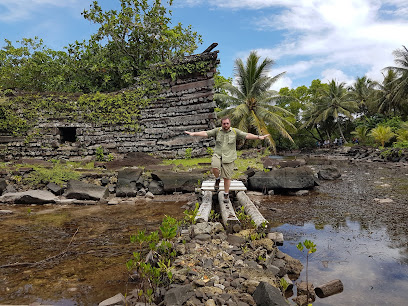
Cliff Hotel & Restaurant
Experience the breathtaking views and exquisite local cuisine at Cliff Hotel & Restaurant, a perfect retreat in the heart of Pohnpei.

Joy Hotel & Restaurant
Discover the perfect blend of comfort and authentic Japanese flavors at Joy Hotel & Restaurant in Kolonia, Pohnpei.

Kosrae Nautilus Resort
Experience the beauty and serenity of Kosrae at the Kosrae Nautilus Resort, your gateway to underwater adventures and island tranquility.

Kepirohi Waterfall
Kepirohi Waterfall: A stunning natural escape in Pohnpei with lush hiking trails and a refreshing swimming experience in a tropical paradise.

Pohnpei International Airport
Discover the beauty of Pohnpei through Pohnpei International Airport, your gateway to Micronesia's lush landscapes and rich cultural heritage.

7 Stars Inn & Riverside Restaurant
Experience the charm of Pohnpei Island at 7 Stars Inn & Riverside Restaurant, where comfort meets culinary excellence amid breathtaking nature.

Mangrove Bay Hotel
Experience the beauty of Pohnpei at Mangrove Bay Hotel, your serene escape in Micronesia with stunning views and warm hospitality.

Pohnpei Surf and Dive Club
Discover the vibrant underwater world of Pohnpei with Pohnpei Surf and Dive Club, your gateway to unforgettable diving adventures.
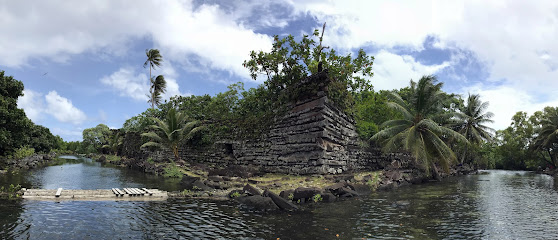
Island Palms Hotel & Restaurant
Island Palms Hotel & Restaurant in Palikir offers comfort and local charm, perfect for exploring Pohnpei's natural beauty and rich culture.

Lelu Ruins Historic Park
Explore the Lelu Ruins Historic Park, an ancient treasure of Kosrae that reveals the secrets of a rich civilization amidst lush tropical landscapes.
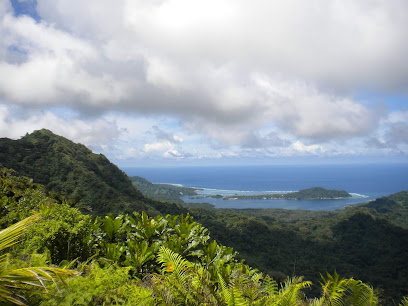
Ant Atoll
Experience the breathtaking beauty and tranquility of Ant Atoll, a hidden tropical paradise in the Federated States of Micronesia.
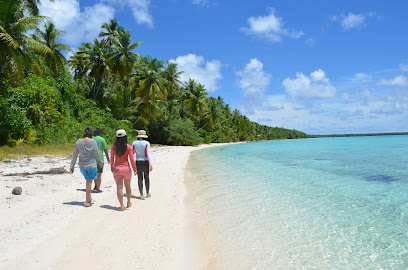
Sokehs Rock
Discover the breathtaking views and serene beauty of Sokehs Rock in Pohnpei, a must-visit scenic spot for nature lovers and adventure seekers alike.
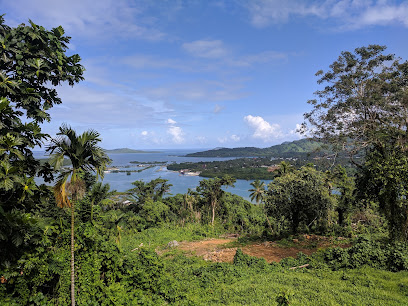
鰻魚池
Explore the tranquil Eel Pools in Marahu Village, Pohnpei - a hidden paradise perfect for nature lovers and adventure seekers.
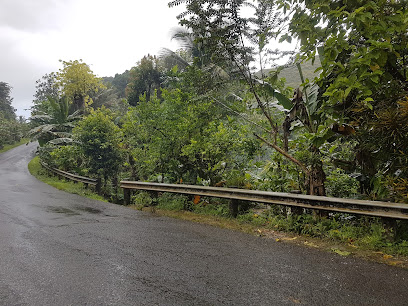
Lelu
Explore the breathtaking beauty and rich history of Lelu Island in Kosrae, a must-visit destination for nature lovers and adventurers alike.

Unmissable attractions to see
Japanese WWII Anti-Aircraft Guns
Explore the historic Japanese WWII Anti-Aircraft Guns in Pohnpei, where history meets stunning nature and unique bird watching opportunities await.
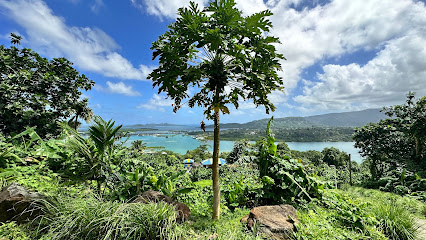
Lelu Ruins Historic Park
Explore the rich history and stunning architecture of Lelu Ruins Historic Park in Kosrae, a hidden treasure of Micronesian culture.
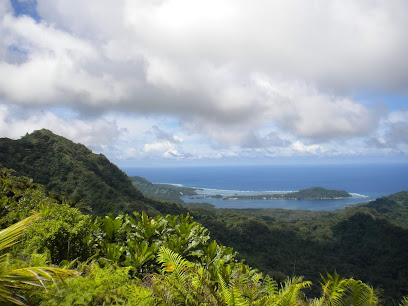
Japanese WWII Lighthouse
Discover the Japanese WWII Lighthouse in Chuuk, a historical landmark offering breathtaking views and a glimpse into the region's wartime past.
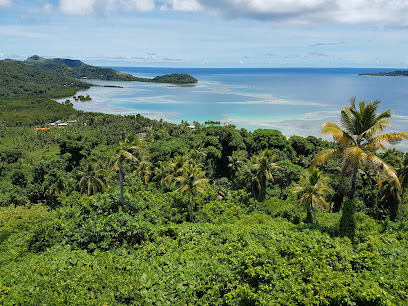
Sokehs Rock
Discover the breathtaking vistas and natural beauty of Sokehs Rock, a must-visit scenic spot in Pohnpei, perfect for adventure seekers and nature lovers.
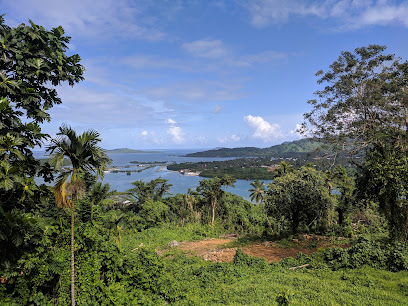
Nett Point
Explore Nett Point in Pohnpei: a serene park perfect for swimming, picnicking, and enjoying breathtaking coastal views.
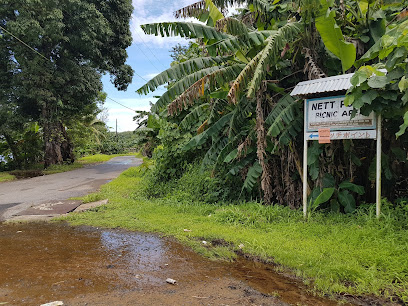
Sipyen waterfall
Discover the enchanting Sipyen Waterfall, a tropical paradise in Kosrae perfect for relaxation and breathtaking photography.
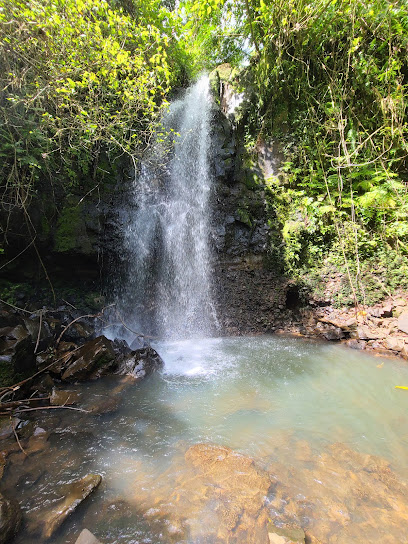
Nanpohnmweli Waterfall
Unwind at Nanpohnmweli Waterfall, a serene hiking paradise in Pohnpei, where nature's beauty and tranquility await every explorer.
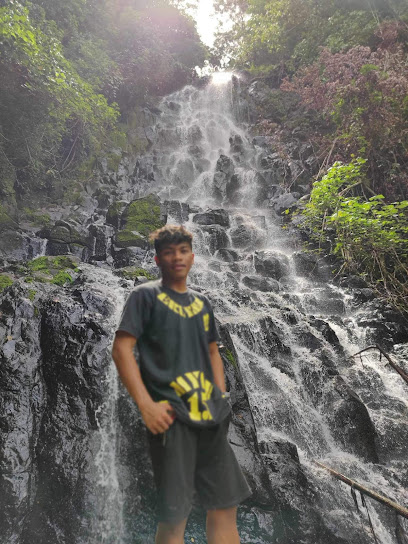
Sampas Bridge
Discover the stunning views and tranquil ambiance at Sampas Bridge, a must-visit tourist attraction in Chuuk, enhancing your travel experience.
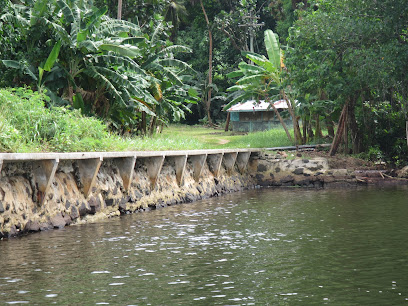
Japanese Caves at Tonoas Highest Peak
Explore the mystical Japanese Caves at Tonoas Highest Peak, a remarkable blend of history and natural beauty in Chuuk.
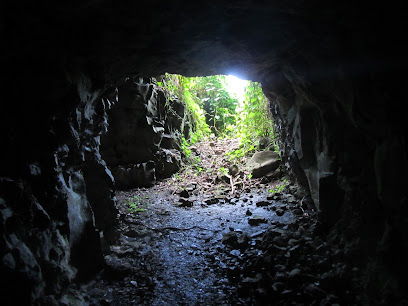
Nikotoapw Waterfall
Explore the breathtaking beauty of Nikotoapw Waterfall, a serene escape in Pohnpei, perfect for hiking and swimming amidst lush landscapes.

Nahnalaud (Mountain) Trailhead
Explore the breathtaking Nahnalaud Trailhead in Pohnpei, a must-visit hiking area surrounded by lush landscapes and unique wildlife.

junbooth
Explore Junbooth Park in Palikir, Pohnpei – a peaceful retreat with lush landscapes and tranquil paths for a perfect nature escape.

AA Getaway
Experience the captivating beauty and rich culture of AA Getaway in Pohnpei, a true tropical paradise for adventurers and relaxation seekers alike.

Trail Leading to Nan Madol Ruins
Explore the breathtaking Trail Leading to Nan Madol Ruins in Pohnpei, where nature meets ancient history in a stunning hiking adventure.

Pwoaipwoai
Explore the breathtaking summit of Pwoaipwoai, a magnificent mountain peak in Pohnpei, and embrace the stunning views and rich biodiversity of Micronesia.

Essential places to dine
Denny's Micronesia Mall
Discover casual dining at Denny's Micronesia Mall in Guam—where delicious American cuisine meets family-friendly hospitality.

Beachin' Shrimp 3
Discover delicious seafood delights at Beachin' Shrimp 3 in Guam's Micronesia Mall - A must-visit culinary destination for food lovers.
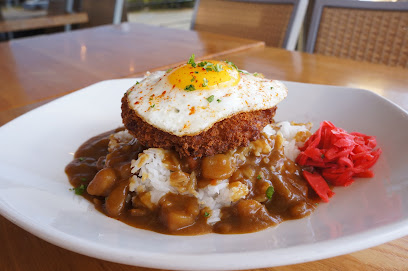
Cliff Hotel & Restaurant
Experience breathtaking views and exquisite flavors at Cliff Hotel & Restaurant in Pohnpei - where culinary excellence meets stunning landscapes.

Joy Hotel & Restaurant
Experience authentic Japanese cuisine infused with local flavors at Joy Hotel & Restaurant in Kolonia, Pohnpei.

Chinastar Hotel & Restaurant
Savor authentic Chinese cuisine at Chinastar Hotel & Restaurant in Kolonia, Pohnpei – where great flavors meet warm hospitality.

7 Stars Inn & Riverside Restaurant
Discover culinary delights and serene riverside views at 7 Stars Inn & Riverside Restaurant on beautiful Pohnpei Island.

Ocean View Plaza Hotel
Experience comfort and local charm at Ocean View Plaza Hotel - your perfect base for exploring Pohnpei Island's natural wonders.
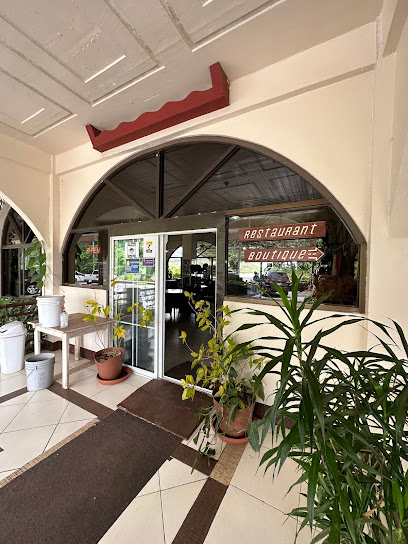
Arnold's
Experience the vibrant flavors of Pohnpei at Arnold's, where local cuisine meets island hospitality in a cozy setting.
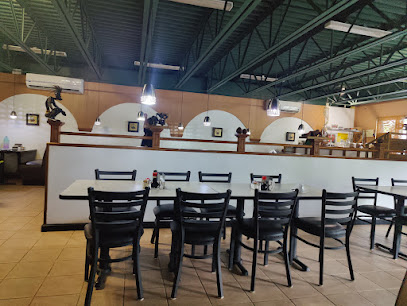
Sea Breeze Hotel
Discover comfort and delicious flavors at Sea Breeze Hotel in Kolonia, Pohnpei—your perfect getaway amidst breathtaking landscapes.
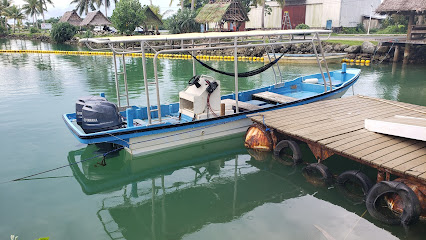
Town's Diner
Discover culinary delights at Town's Diner in Kolonia, Pohnpei - where local flavors meet cozy dining.
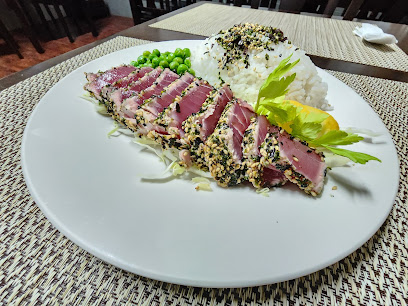
Fusion Restaurant
Experience the perfect blend of local and international cuisine at Fusion Restaurant in Kolonia, Pohnpei—where every meal tells a story.
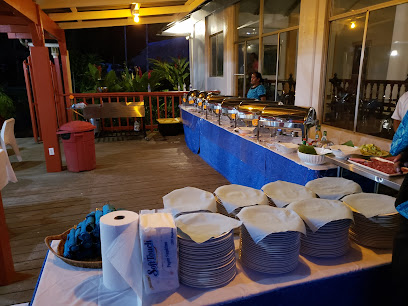
Hideaway Bar & Grill
Discover the taste of Pohnpei at Hideaway Bar & Grill – where local flavors meet breathtaking views.
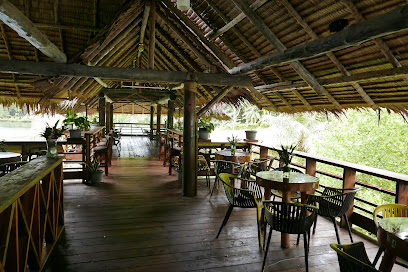
Nett Ramen
Discover authentic Japanese flavors at Nett Ramen in Pohnpei - where every bowl tells a story.
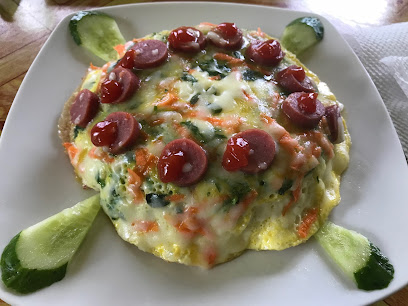
Cupid's Bar and Grille
Discover culinary delights at Cupid's Bar and Grille in Pohnpei - where local flavors meet warm hospitality.
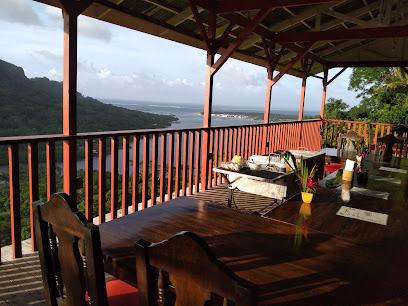
One World Plaza Cafe & Restaurant
Discover authentic Pohnpeian cuisine at One World Plaza Cafe & Restaurant in Kolonia - where every meal tells a story.
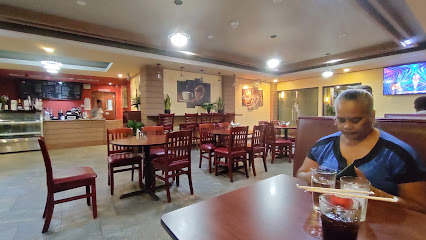
Markets, malls and hidden boutiques
A-One Mart, Kolonia
Discover local flavors and everyday essentials at A-One Mart, the bustling grocery store in Kolonia, Pohnpei, perfect for tourists.
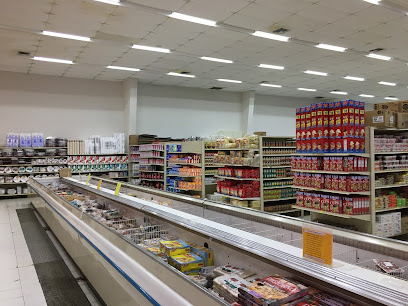
Ace Commercial Center
Visit Ace Commercial Center in Kolonia for a vibrant shopping experience filled with local produce, international goods, and delicious meals.
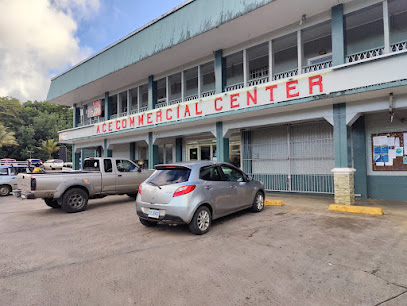
Palm Terrace Market
Discover the vibrant flavors of Pohnpei at Palm Terrace Market, your go-to grocery store for local produce and unique snacks.
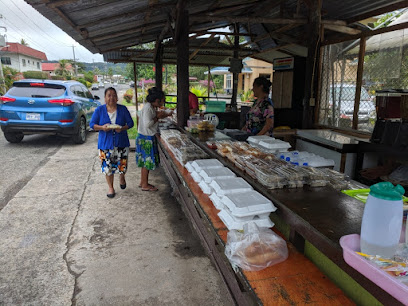
Isamu Nakasone Store (INS)
Explore the authentic flavors and local culture at Isamu Nakasone Store, a delightful grocery store and café in Kolonia, Pohnpei.
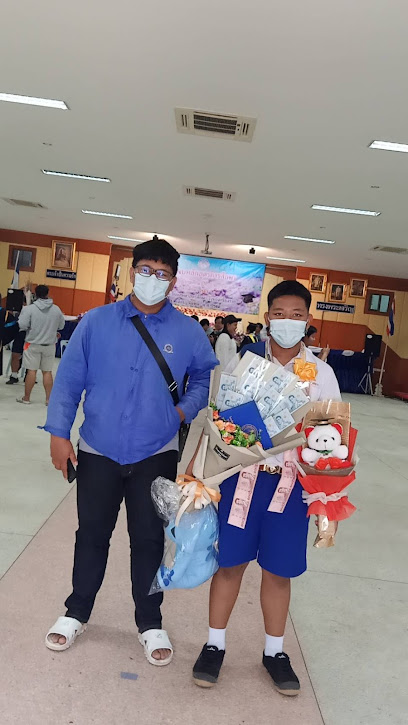
Yoshies Supermarket
Explore the essence of Japanese cuisine at Yoshies Supermarket in Kolonia, your go-to stop for authentic groceries and culinary delights.
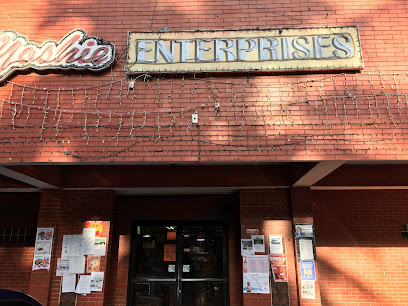
Blue Nile
Explore the vibrant Blue Nile grocery store in Kolonia for fresh produce, local delicacies, and a taste of Pohnpeian culture.
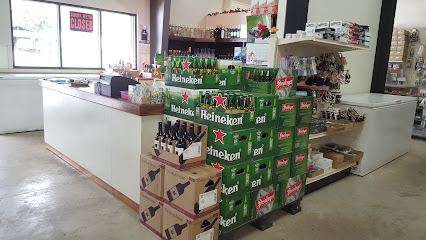
Seven Eleven
Discover the convenience of Seven Eleven in Pohnpei, your go-to spot for local snacks and essentials while exploring this beautiful island paradise.

Imelda's Shoe Store
Explore Imelda's Shoe Store in Pohnpei for a stylish selection of shoes, clothing, and accessories that embody local fashion and culture.
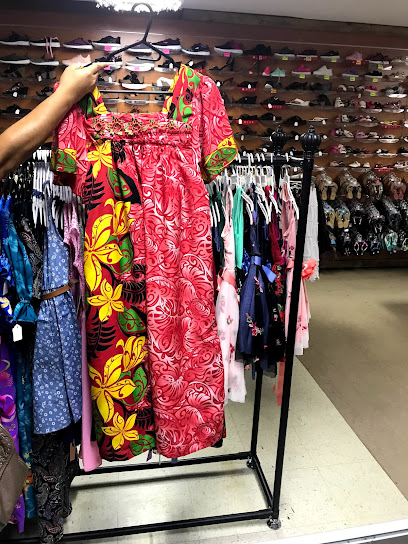
4 R's Mini Mart Store
Discover the local charm and unique products at 4 R's Mini Mart Store, a vibrant shopping destination in Peidie, Pohnpei, perfect for tourists.

En's 7 Stars Store
Explore the vibrant offerings of En's 7 Stars Store in Kolonia, where local culture meets everyday essentials for every traveler.
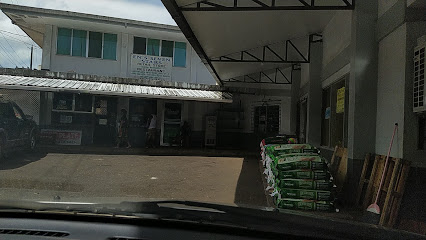
Ray & Dor's
Discover the heart of Kolonia at Ray & Dor's, where local culture meets convenience in a charming general store atmosphere.

Woodcraft
Explore the enchanting world of Pohnpei handcrafts at Woodcraft Gift Shop, where every piece is a celebration of local culture and artistry.

J & D Store
Explore the vibrant selection of home goods at J & D Store in Kolonia, Pohnpei, where local craftsmanship meets unique island charm.
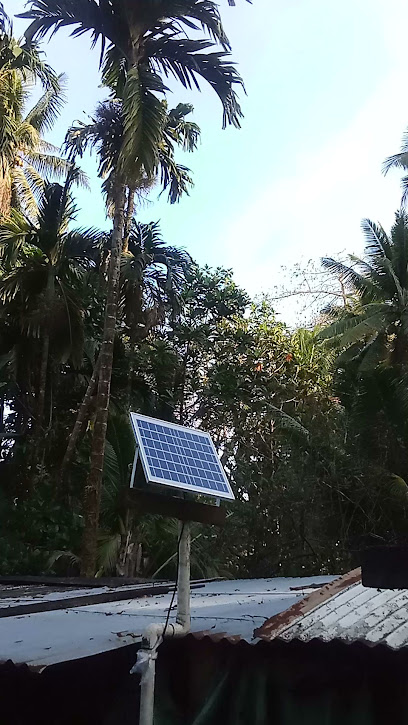
Panuelo Store
Explore Panuelo Store in Kolonia for authentic Pohnpei crafts and souvenirs that capture the island's rich cultural heritage.

Mimi's Closet
Explore Mimi's Closet in Kolonia, Pohnpei, for a unique blend of local fashion and contemporary style, perfect for tourists seeking authentic island treasures.
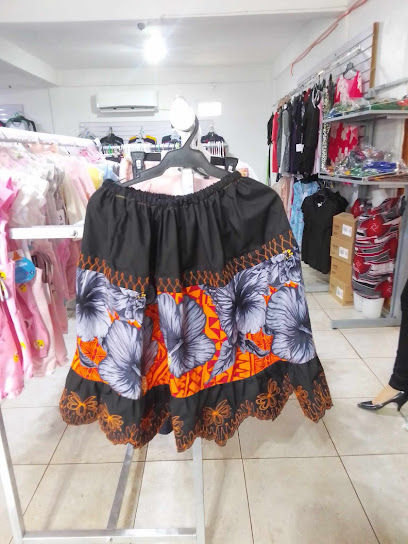
Essential bars & hidden hideouts
Cliff Hotel & Restaurant
Experience the best of Pohnpei's cuisine at Cliff Hotel & Restaurant, where breathtaking views meet exquisite flavors.

Joy Hotel & Restaurant
Experience the best of Japanese and local cuisine at Joy Hotel & Restaurant in Kolonia, Pohnpei, where every meal is a delightful adventure.

7 Stars Inn & Riverside Restaurant
Discover the perfect blend of hospitality, local cuisine, and stunning views at 7 Stars Inn & Riverside Restaurant on Pohnpei Island.

Mangrove Bay Bar
Explore the beauty of Pohnpei at Mangrove Bay Bar, where vibrant nightlife meets delicious local cuisine and refreshing cocktails.
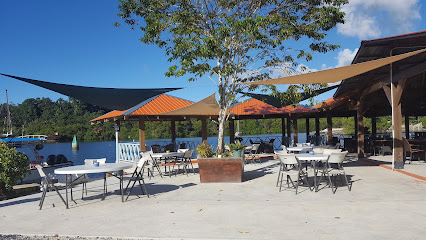
Ocean View Plaza Hotel
Experience the charm of Pohnpei Island at Ocean View Plaza Hotel - a tranquil escape with stunning ocean views and delightful dining options.
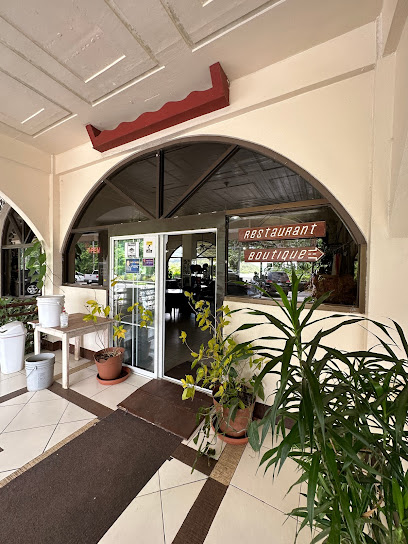
Arnold's
Experience the vibrant flavors of Pohnpei at Arnold's, a premier restaurant in Kolonia offering delicious local cuisine and a welcoming atmosphere.
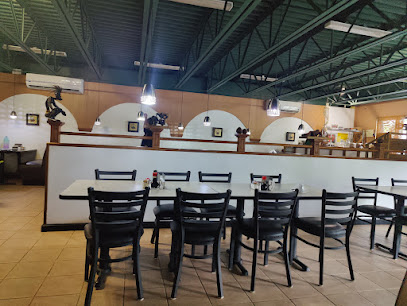
Pohnpei Surf and Dive Club
Explore the underwater wonders of Pohnpei with Pohnpei Surf and Dive Club, where adventure meets breathtaking marine beauty.
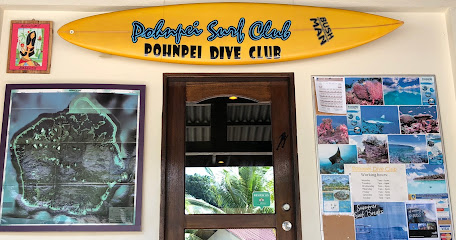
Town's Diner
Discover the heart of Kolonia at Town's Diner, where comfort food meets local charm in Pohnpei.

Fusion Restaurant
Savor the unique flavors of Pohnpei at Fusion Restaurant, where culinary artistry meets stunning sunset views.
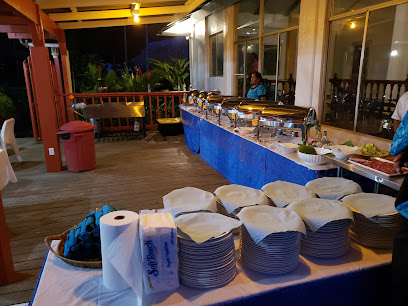
Hideaway Bar & Grill
Discover the vibrant flavors of Pohnpei at Hideaway Bar & Grill, a perfect blend of local cuisine and tropical ambiance.
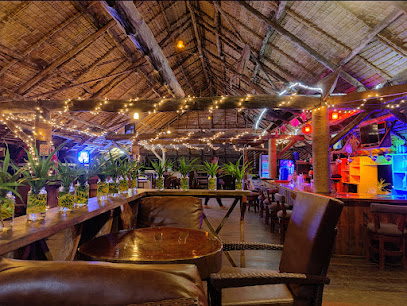
Nett Ramen
Discover the authentic flavors of Japan at Nett Ramen in Pohnpei - a culinary escape that delights every palate.
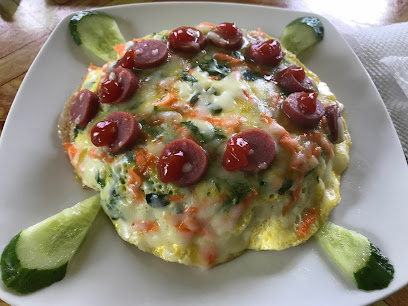
Cupid's Bar and Grille
Discover the flavors of Pohnpei at Cupid's Bar and Grille, where local cuisine meets stunning views in a welcoming atmosphere.
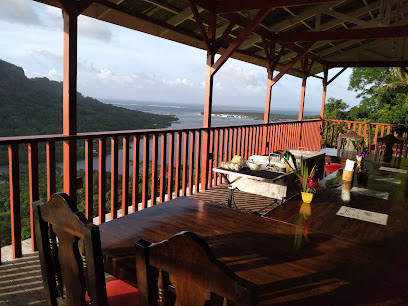
Coco Marina Club
Experience the lively charm of Coco Marina Club, a vibrant bar in Kolonia, Pohnpei, perfect for relaxation and socializing.
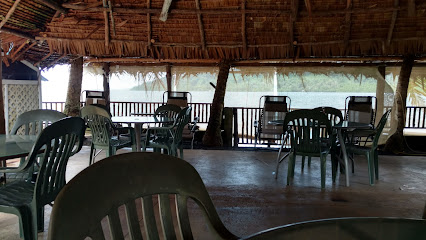
Hide-away Hotel
Experience the serene beauty of Pohnpei at Hide-away Hotel, your perfect retreat for relaxation and adventure.
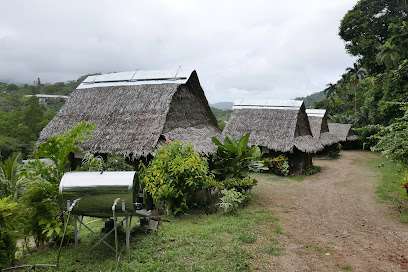
Kaselehlie Diner
Discover Kaselehlie Diner, a buffet paradise in Pohnpei, where local flavors meet warm hospitality in a cozy island setting.
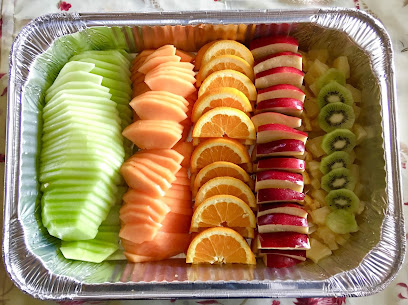
Local Phrases
-
- HelloKaselel
[kah-seh-lehl] - GoodbyeKalahngan
[kah-lahng-gahn] - YesEi
[ay] - NoEng
[ehng] - Please/You're welcomeKalahngan
[kah-lahng-gahn] - Thank youKalahngan
[kah-lahng-gahn] - Excuse me/SorryKalahngan
[kah-lahng-gahn] - How are you?Kaselel di kediad?
[kah-seh-lehl dee kehd-yahd] - Fine. And you?Mweodo. Ei kediad?
[mweh-oh-doh. ay kehd-yahd] - Do you speak English?Pweipwei English ak?
[pweh-pweh ehn-gleesh ahk] - I don't understandEhng kediad
[ehng kehd-yahd]
- HelloKaselel
-
- I'd like to see the menu, pleaseEimwini menu, kalahngan
[eh-mwee-nee meh-noo, kah-lahng-gahn] - I don't eat meatEng pweipwei ni mihmi
[ehng pweh-pweh nee meeh-mee] - Cheers!Kalahngan
[kah-lahng-gahn] - I would like to pay, pleaseEimwini pweipwei, kalahngan
[eh-mwee-nee pweh-pweh, kah-lahng-gahn]
- I'd like to see the menu, pleaseEimwini menu, kalahngan
-
- Help!Kohso!
[koh-soh] - Go away!Pwukei!
[pwuh-keh-ee] - Call the Police!Kohso polis!
[koh-soh poh-lees] - Call a doctor!Kohso doketa!
[koh-soh doh-keh-tah] - I'm lostEhng kohso mwahu
[ehng koh-soh mwah-hoo] - I'm illEng mwahu
[ehng mwah-hoo]
- Help!Kohso!
-
- I'd like to buy...Eimwini kohso...
[eh-mwee-nee koh-soh] - I'm just lookingEng kohso mei
[ehng koh-soh meh-ee] - How much is it?Kihdo mwahnge?
[keedoh mwahng-geh] - That's too expensiveSoun pweipwei mwahnge
[sown pweh-pweh mwahng-geh] - Can you lower the price?Pweipwei kahso sohla mwahnge?
[pweh-pweh kah-soh soh-lah mwahng-geh]
- I'd like to buy...Eimwini kohso...
-
- What time is it?Kihdo di kohso?
[keedoh dee koh-soh] - It's one o'clockIngasou wain
[een-gah-soh wah-een] - Half past (10)Sihsih pweipwei (10)
[see-see pweh-pweh (10)] - MorningKohso
[koh-soh] - AfternoonIpil
[ee-peel] - EveningLemmeng
[lehm-mehng] - YesterdayKehleng
[keh-leng] - TodayKohso
[koh-soh] - TomorrowKilang
[kee-lahng] - 1Wain
[wah-een] - 2Sohk
[sohk] - 3Kihkih
[keek-keek] - 4Sihpei
[see-pay] - 5Lima
[lee-mah] - 6Enem
[eh-nehm] - 7Fitu
[fee-too] - 8Walung
[wah-loong] - 9Siwah
[see-wah] - 10Sang
[sahng]
- What time is it?Kihdo di kohso?
-
- Where's a/the...?Kihdo di...
[keedoh dee] - What's the address?Kihdo di address?
[keedoh dee address] - Can you show me (on the map)?Pweipwei kahso sohla (di map)?
[pweh-pweh kah-soh soh-lah (dee map)] - When's the next (bus)?Kihdo duhd di next (bus)?
[keedoh doo-dee dee next (bus)] - A ticket (to ....)Eimwini ticket (to ....)
[eh-mwee-nee ticket (to)]
- Where's a/the...?Kihdo di...
History of Pohnpei
-
Nan Madol is often referred to as the 'Venice of the Pacific'. This archaeological site served as the ceremonial and political seat of the Saudeleur Dynasty, which ruled Pohnpei until around 1628. Built on a series of artificial islets, the remains of stone palaces, temples, and tombs are a testament to the island’s sophisticated ancient society. The construction of Nan Madol, involving massive basalt stones, remains a subject of fascination and mystery, as it is unclear how such heavy stones were transported and assembled.
-
The first known European contact with Pohnpei occurred in the early 16th century when Spanish explorers sighted the island. However, it wasn't until the 19th century that more sustained interaction began. The arrival of European explorers and traders introduced new goods, ideas, and diseases, which had significant impacts on the local population and culture.
-
In the mid-19th century, Christian missionaries arrived on Pohnpei, bringing with them new religious practices and Western education. The spread of Christianity led to significant changes in the social and cultural fabric of the island. Traditional practices and beliefs were often suppressed or modified to align with Christian teachings.
-
Pohnpei became a part of the German Empire in 1899 following the Spanish-American War. The Germans introduced various administrative and economic changes, including the development of copra production. After World War I, Japan took control of Pohnpei under a League of Nations mandate. The Japanese era saw the construction of infrastructure, such as roads and schools, as well as the introduction of new agricultural techniques.
-
During World War II, Pohnpei was occupied by Japanese forces and became a target for Allied bombings. The island witnessed significant military activity, and remnants of this period, such as bunkers and aircraft wrecks, can still be found today. After the war, Pohnpei came under U.S. administration as part of the Trust Territory of the Pacific Islands.
-
Pohnpei, along with other islands in the Federated States of Micronesia, began its journey towards independence in the late 20th century. In 1979, the Federated States of Micronesia was established, and Pohnpei became one of its four states. The nation achieved full sovereignty in 1986, entering into a Compact of Free Association with the United States.
-
Despite the influences of colonization and modernization, Pohnpei has managed to preserve many of its traditional customs and practices. The island is known for its rich oral history, traditional navigation skills, and vibrant cultural festivals. Efforts are ongoing to document and revive traditional knowledge and practices, ensuring that the cultural heritage of Pohnpei remains alive for future generations.
Pohnpei Essentials
-
Pohnpei is part of the Federated States of Micronesia and is primarily accessed by air. The main entry point is Pohnpei International Airport (PNI) located near the capital city of Kolonia. United Airlines operates regular flights from Guam and Honolulu, with connections from other international destinations. Some regional flights come from other islands within Micronesia. Ensure your travel documents are in order, including a valid passport and any necessary visas.
-
Getting around Pohnpei can be done via taxis, rental cars, or local buses. Taxis are abundant and relatively inexpensive, but it's advisable to negotiate the fare beforehand. Car rentals are available for those who prefer to explore at their own pace. Public buses are less frequent but can be a cost-effective way to travel between major points on the island. Walking is also a practical option in smaller towns and villages.
-
The official currency of Pohnpei is the United States Dollar (USD). Credit cards are accepted in major hotels, some restaurants, and larger stores, but cash is preferred for smaller establishments and local markets. ATMs are available, mainly in Kolonia, but it's wise to carry sufficient cash, especially when traveling to more remote areas. Traveler's checks are generally not accepted.
-
Pohnpei is generally a safe destination for tourists. However, standard precautions should be taken. Avoid walking alone at night in isolated areas and be aware of your surroundings. Petty theft can occur, so keep valuables secured. There are no specific high-crime areas targeting tourists, but it's always best to stay vigilant. The local police are approachable and can be contacted for assistance if needed.
-
In case of emergency, dial 911 for immediate assistance. Medical facilities are available in Kolonia, with the main hospital being the Pohnpei State Hospital. It’s advisable to have travel insurance that covers medical emergencies. For minor health issues, pharmacies in Kolonia can provide over-the-counter medications. Familiarize yourself with local emergency procedures and contacts upon arrival.
-
Fashion: Do dress modestly, especially in rural areas and villages. Avoid overly revealing clothing. Religion: Do respect local customs and traditions. Remove your shoes when entering someone's home or a place of worship. Public Transport: Do be respectful and courteous to fellow passengers. Avoid loud conversations and disruptive behavior. Greetings: Do greet people with a smile and a handshake. A slight bow is also appreciated. Eating & Drinking: Do try local dishes and accept food offerings graciously. Don’t refuse hospitality, as it may be considered impolite.
-
To experience Pohnpei like a local, visit the markets in Kolonia where you can buy fresh produce and traditional crafts. Engage with locals, who are often friendly and willing to share insights about the island’s history and culture. Don’t miss the Nan Madol ruins, a UNESCO World Heritage Site. For a unique experience, participate in a sakau (kava) ceremony, which is an important cultural tradition on the island. Respect the natural environment by not littering and adhering to local conservation efforts.
Trending Landmark in Pohnpei
Nearby Cities to Pohnpei
-
Things To Do in Kolonia
-
Things To Do in Nan Madol
-
Things To Do in Kosrae
-
Things To Do in Weno
-
Things To Do in Chuuk
-
Things To Do in Denigomodu
-
Things To Do in Aiwo
-
Things To Do in Uaboe
-
Things To Do in Boe
-
Things To Do in Buada
-
Things To Do in Anabar
-
Things To Do in Ijuw
-
Things To Do in Anibare
-
Things To Do in Yaren
-
Things To Do in Kavieng











